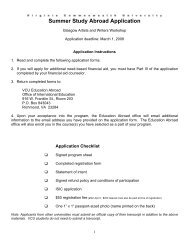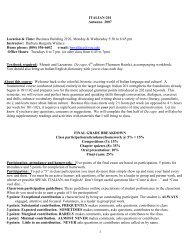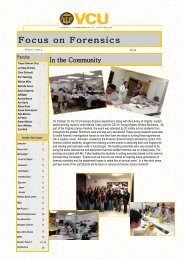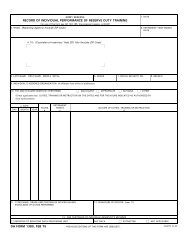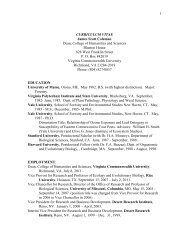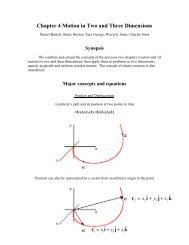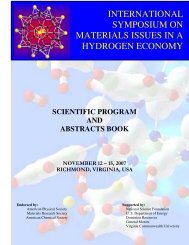Chapter 9 – Systems of Particles
Chapter 9 – Systems of Particles
Chapter 9 – Systems of Particles
Create successful ePaper yourself
Turn your PDF publications into a flip-book with our unique Google optimized e-Paper software.
3. acm is the acceleration <strong>of</strong> the center <strong>of</strong> mass <strong>of</strong> the system and not any<br />
other point in the system.<br />
Linear Momentum/Conservation <strong>of</strong><br />
Linear momentum (a vector quantity) <strong>of</strong> a particle is defined as<br />
p = mv<br />
Or momentum is equal to the mass times the velocity. Its SI units are<br />
kilogram-meter per second.<br />
For a system <strong>of</strong> particles, it simply changes to<br />
P = Mvcm<br />
Using momentum, Newton’s second law can be written as<br />
dP<br />
∑ Fext = dt<br />
In any closed, isolated system, the law <strong>of</strong> conservation <strong>of</strong> linear momentum<br />
states that<br />
Pi=Pf<br />
Question: If a system <strong>of</strong> particles has zero momentum does the system<br />
necessarily have zero kinetic energy?<br />
If P = Mvcm = 0 does KE= 2 1 mv² = 0 ?<br />
NO! Momentum is a vector quantity, while kinetic energy is a scalar.<br />
• Tips: Make sure the system is closed and isolated. Be careful that<br />
boundaries <strong>of</strong> the system exclude objects that exert non-conservative<br />
forces. In other words, in that case Pi would not equal Pf.<br />
<strong>Systems</strong> with Varying Mass<br />
Things get a little more complicated when the mass begins to vary, like in a<br />
rocket for example. The book gives two equations for working with rockets.<br />
First Rocket Equation says<br />
Ru = Ma



